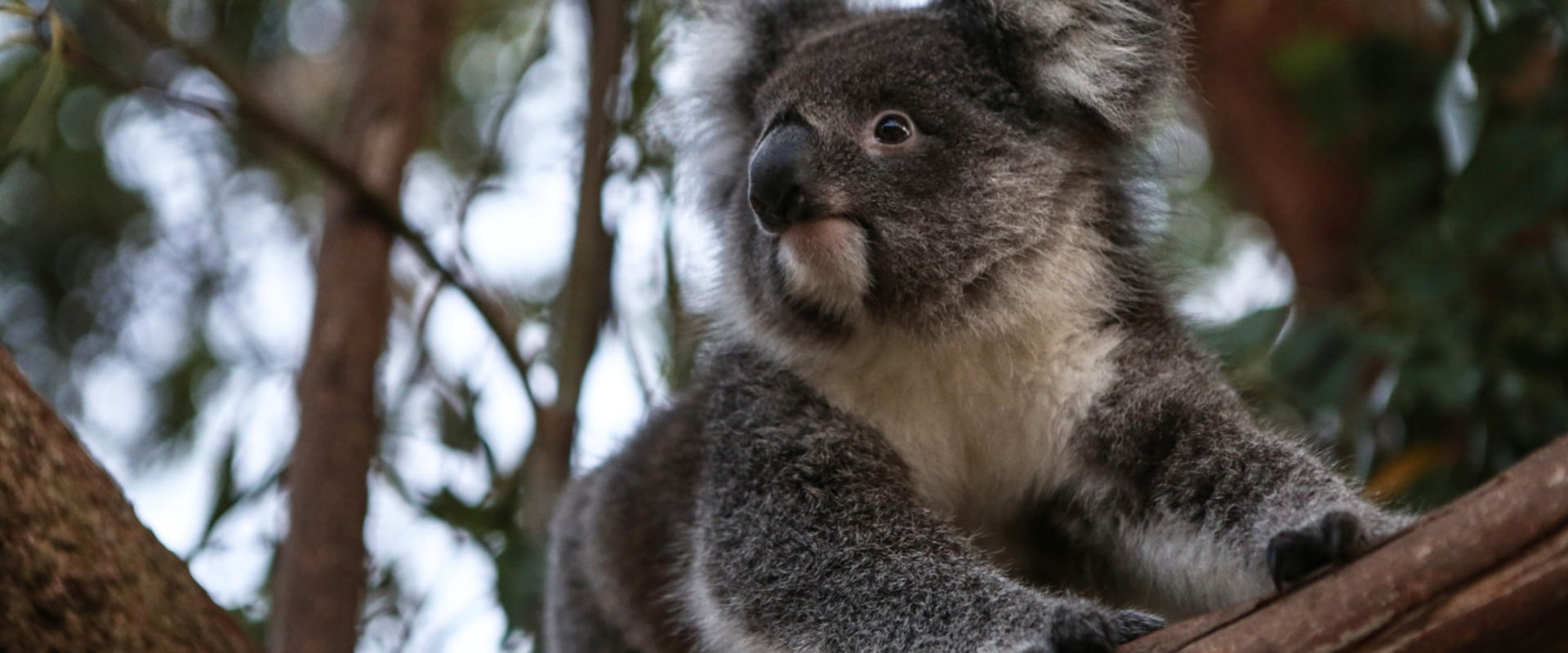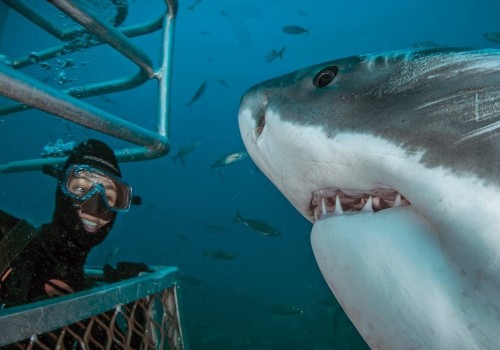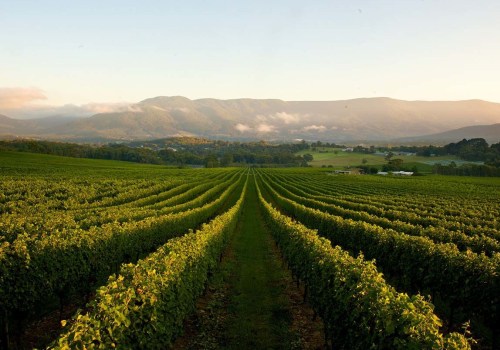Welcome to Australia, a land known for its breathtaking landscapes, diverse cultures, and unique wildlife. When it comes to encountering Australian wildlife, one animal stands out above the rest - the koala. These iconic creatures are beloved by people all around the world for their cute and cuddly appearance, but there is so much more to them than meets the eye. In this article, we will dive into the fascinating world of koalas, exploring their behavior, habitat, and importance to Australian ecosystems. So grab a cup of tea and get ready to learn all about these incredible animals as we take a closer look at koalas - the unique Australian wildlife you need to know about. First, let's start with some basic information about koalas. They are native to Australia and can only be found in the eastern and southeastern parts of the country.
Despite their name, koalas are not bears, but rather marsupials, meaning they carry their young in a pouch. They are herbivores and mainly feed on eucalyptus leaves, which make up almost their entire diet. These leaves are not very nutritious, so koalas spend most of their time sleeping, conserving energy for digestion. However, when they are awake, they can be quite active and even climb up to 100 trees a day!Now let's talk about the main reason why koalas are so beloved - their adorable appearance.
With their round faces, fluffy ears, and chubby bodies, it's no wonder why people can't resist these creatures. But beyond their cuteness, koalas also have some unique physical features that help them survive in their environment. For example, they have sharp claws that allow them to grip onto trees easily and padded bottoms to cushion their falls. But it's not just their appearance that makes koalas special. These animals also play a crucial role in the Australian ecosystem.
As herbivores, they help to control the growth of eucalyptus trees, which can become invasive without natural predators. Additionally, their droppings help to fertilize the soil and promote the growth of other plants and trees. Without koalas, the balance of the ecosystem could be greatly disrupted. Finally, let's discuss one of the most pressing issues facing koalas today - habitat destruction. Due to deforestation and urbanization, koalas are losing their natural habitats at an alarming rate.
This puts them at risk of extinction and highlights the importance of conservation efforts. Organizations like the Australian Koala Foundation are working tirelessly to protect these animals and their habitats, but it's a battle that we must all join in if we want to ensure the survival of koalas for future generations.
Koalas and Eucalyptus Trees
Koalas and eucalyptus trees have a special relationship that goes beyond just being a source of food for the marsupials. In fact, this relationship is crucial for the survival of both species. Eucalyptus trees are the main source of food for koalas, providing them with the nutrients they need to thrive.However, these trees are not just any ordinary food source. They contain toxins that are harmful to most animals, but koalas have developed a unique ability to break down and detoxify these toxins. This is where the symbiotic relationship comes into play. Koalas have a specialized digestive system that allows them to digest the eucalyptus leaves without being harmed by the toxins.
This is due to a unique bacteria found in their stomachs that helps them break down the toxins. In return, koalas help eucalyptus trees thrive by spreading their seeds through their droppings. This helps the trees reproduce and continue to provide food for the koalas. Without eucalyptus trees, koalas would not have a sustainable food source and without koalas, eucalyptus trees would struggle to reproduce and maintain their population.
The Importance of Koalas in the Ecosystem
Koalas are not just adorable creatures, they also play a crucial role in maintaining the balance of the Australian ecosystem.These fluffy marsupials are considered a keystone species, meaning that their presence is essential for the survival of other species in their habitat. One of the main ways koalas contribute to the ecosystem is through their diet. Koalas primarily feed on eucalyptus leaves, and as they move from tree to tree, they help spread the seeds of these trees, allowing for new growth and diversity in the forest. This is especially important in areas where natural disasters or human activity have caused a decline in eucalyptus trees.
In addition, koalas also help maintain the health of eucalyptus trees by keeping them from becoming overgrown. As they feed on the leaves, they prune the branches and keep the trees from becoming too dense. This allows for sunlight to reach the forest floor, promoting the growth of other plants and providing food and shelter for a variety of animals. Furthermore, koalas are an important part of the food chain in their ecosystem. As prey animals, they provide a source of food for predators such as dingoes and snakes.
This helps regulate the population of these predators and prevents them from becoming too dominant in the ecosystem. Without koalas, the Australian ecosystem would suffer greatly. Their presence helps maintain biodiversity and promotes a healthy and balanced ecosystem for all species to thrive in.
The Threats Facing Koalas
Koalas may be one of the most beloved animals in Australia, but they are also facing a number of threats that could potentially lead to their extinction. It is important for us to understand these dangers and take action to protect these unique creatures.Habitat Loss:
One of the biggest threats facing koalas is habitat loss. As urbanization and land development continue to expand, koalas are losing their natural habitat at an alarming rate.This not only impacts their ability to find food and shelter, but it also increases their risk of being hit by cars or attacked by dogs as they move closer to human settlements.
Climate Change:
The changing climate is also having a significant impact on koalas. Rising temperatures and extreme weather events, such as bushfires and droughts, are causing disruptions to their natural habitat and food sources. This can lead to malnutrition and increased susceptibility to diseases.Chlamydia:
Yes, even koalas can contract sexually transmitted diseases. Chlamydia is a serious infection that can cause blindness, infertility, and even death in koalas.It is believed that this disease is spreading rapidly due to the stress and weakened immune systems of koalas caused by other threats like habitat loss and climate change.
What Can We Do?
Despite these threats, there is still hope for the survival of koalas. As individuals, we can help by supporting organizations that work towards preserving koala habitats and implementing conservation efforts. We can also make changes in our own lives, such as reducing our carbon footprint and being mindful of how our actions impact wildlife. The future of koalas relies on our ability to recognize and address the threats they are facing. By taking action now, we can ensure that these adorable and unique creatures continue to thrive in their natural habitat for generations to come.The Life of a Koala
Koalas are fascinating creatures that have captured the hearts of many.These marsupials are native to Australia and can be found in the eastern and southeastern regions of the country. They are known for their unique appearance and laid-back lifestyle, spending most of their days sleeping or eating. But what is the life of a koala really like? In this section, we will explore the behaviors and habits of these beloved animals in the wild.
Diet
Koalas primarily feed on eucalyptus leaves, which make up 90% of their diet.These leaves are low in nutrition and high in fiber, which means koalas need to eat large amounts to sustain themselves. They have a specialized digestive system that allows them to break down the tough eucalyptus leaves and extract the limited nutrients.
Home Range
Koalas are solitary animals and have a home range of about 1 hectare. They are very territorial and will mark their territory with scent glands on their chest.Females have smaller home ranges compared to males, as they require less food due to their smaller size.
Sleeping Habits
Koalas are nocturnal animals, meaning they are most active at night. They spend around 18-20 hours a day sleeping, usually in the forks of eucalyptus trees. This not only provides them with protection from predators but also helps conserve energy as their diet is not very nutritious.Social Interactions While koalas may seem solitary, they do have some social interactions. Males will often compete for mating rights with females, and females may form small groups with their young. However, these interactions are brief, and koalas spend most of their time alone.
Threats
Koalas face many threats in the wild, including habitat loss due to deforestation, bushfires, and urbanization.They are also vulnerable to diseases such as chlamydia and can be attacked by predators such as dogs and foxes.
Conservation Efforts
Due to these threats, koalas are listed as vulnerable on the IUCN Red List. Conservation efforts are being made to protect their habitats and prevent further decline in their population. These include planting more eucalyptus trees, creating wildlife corridors, and treating koalas affected by diseases. Koalas are truly unique animals that hold a special place in the hearts of Australians and people all over the world.From their cute appearance to their crucial role in the ecosystem, there is so much to appreciate about these animals. However, with habitat destruction on the rise, it's important that we all do our part to protect koalas and their habitats. By learning more about these fascinating creatures and supporting conservation efforts, we can ensure that koalas continue to thrive for generations to come.







